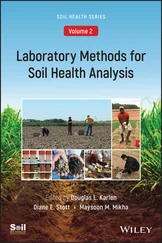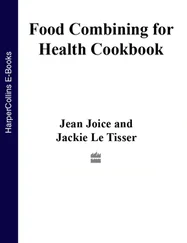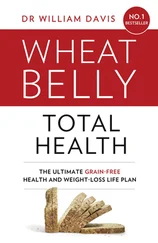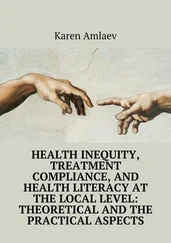Soil Health Analysis, Set
Здесь есть возможность читать онлайн «Soil Health Analysis, Set» — ознакомительный отрывок электронной книги совершенно бесплатно, а после прочтения отрывка купить полную версию. В некоторых случаях можно слушать аудио, скачать через торрент в формате fb2 и присутствует краткое содержание. Жанр: unrecognised, на английском языке. Описание произведения, (предисловие) а так же отзывы посетителей доступны на портале библиотеки ЛибКат.
- Название:Soil Health Analysis, Set
- Автор:
- Жанр:
- Год:неизвестен
- ISBN:нет данных
- Рейтинг книги:3 / 5. Голосов: 1
-
Избранное:Добавить в избранное
- Отзывы:
-
Ваша оценка:
- 60
- 1
- 2
- 3
- 4
- 5
Soil Health Analysis, Set: краткое содержание, описание и аннотация
Предлагаем к чтению аннотацию, описание, краткое содержание или предисловие (зависит от того, что написал сам автор книги «Soil Health Analysis, Set»). Если вы не нашли необходимую информацию о книге — напишите в комментариях, мы постараемся отыскать её.
Soil Health Analysis, Set — читать онлайн ознакомительный отрывок
Ниже представлен текст книги, разбитый по страницам. Система сохранения места последней прочитанной страницы, позволяет с удобством читать онлайн бесплатно книгу «Soil Health Analysis, Set», без необходимости каждый раз заново искать на чём Вы остановились. Поставьте закладку, и сможете в любой момент перейти на страницу, на которой закончили чтение.
Интервал:
Закладка:
A leader in building public‐private‐partnerships focused on soil was the Soil Renaissance which was initiated to reawaken public interest and awareness of the importance of soil health in vibrant, profitable and sustainable natural resource systems. Founded as a Farm Foundation and Noble Research Institute collaboration, it sought to make maintenance and improvement of soil health ( https://www.farmfoundation.org/projects/the‐soil‐renaissance‐knowledge‐to‐sustain‐earths‐most‐valuable‐asset‐1873‐d1/) the cornerstone of land use management. The Soil Health Partnership (SHP) ( https://www.soilhealthpartnership.org/science/) initiated by the National Corn Growers Association (NCGA), Walton Family Foundation, Monsanto (Bayer), Environmental Defense Fund (EDF) and the Nature Conservancy (TNC) in 2014 was another leader. Soil Renaissance endeavors have been carried on through the formation of the Soil Health Institute which has provided leadership for a North American project to evaluate soil health measurements (Norris et al., 2020). Meanwhile, the SHP has focused on using science and data to work directly with farmers to adopt practical agricultural practices including (i) cover crops, (ii) conservation tillage, and (iii) advanced nutrient management to improve the economic and environmental sustainability of the farm. Administered by the NCGA, the partnership has more than 220 working farms enrolled in 15 states and one Canadian province. Collectively SHP, SHI, and other regional, state and local partnerships have created an exponential increase in recognition and adoption of soil and crop management practices that can protect, improve, and sustain our fragile soil, water, and air resources.
Many additional soil health projects, partnerships, and investment opportunities have arisen across the United States (e.g., The Wells Fargo Innovation Incubator, or IN 2, The Soil Coalition initiated by Rabobank, a.s.r. and Vitens, and S2G Ventures). The IN 2, a technology incubator and platform co‐administered by the U.S. Department of Energy’s National Renewable Energy Laboratory (NREL), was initiated with six startups focused on agriculture technology solutions, while S2G’s portfolio companies are on a mission to better align the food system to meet changing consumer demands. Collectively, these partnerships and projects have sent farmer and consumer market demand signals across the entire agricultural supply chain. Subsequently, soil health products and services have followed the market demand signals. For example: General Mills now brands products with information regarding soil health and carbon sequestration (General Mills, 2020); BASF began focusing on soil health when they launched Poncho Votivo 2.0 a treatment designed to protect corn seeds and increase microbial activity in the soil (BASF, 2020); and Nutrien Ltd, an agricultural retail company that distributes potash, nitrogen, and phosphate products worldwide for agricultural, industrial, and feed customers. Nutrien which serves the agriculture industry worldwide, purchased Waypoint Analytical, Inc.—a soil science company—in 2018 to expand soil health analyses for farmers (Nutrien Ltd., 2018). These investments as well as those by the Environmental Defense Fund (EDF), Midwest Row Crop Collaborative (MWRCC), National Wheat Foundation, Foundation for Food and Agriculture Research (FFAR), Natural Resources Conservation Service (NRCS), Minnesota Corn Growers Association, and Iowa Corn Growers Association at the regional, state and local level have created partnerships supporting an exponential increase in recognition and adoption of soil and crop management practices that can protect, improve, and sustain our fragile soil, water, and air resources.
Historically, a significant soil health development during the 1980s and 1990s was the Canadian publication entitled “The Health of Our Soil” (Acton & Gregorich, 1995) which was one of the first broad‐scale, organized efforts to provide land managers information on implementing SH‐improving practices. Following those Canadian efforts, several U.S. soil scientists developed a definition of soil quality and recommended assessment methods to characterize how tillage and other crop management decisions were affecting soil resources (e.g., Doran et al., 1994; Doran & Jones, 1996; Karlen et al., 1997). The importance of soil biology was recognized as integral to improving the understanding and measurement of soil quality, but optimum methods to assess soil microbial communities were still being developed (Pankhurst et al., 1997). As the capacity to quantify soil biology indicators improved, discussions of SQ were replaced by the term soil health which was used to communicate to both producers and consumers the importance of understanding and managing soil as a living ecosystem. Consistent with that messaging, the NRCS ultimately defined soil health as “the continued capacity of the soil to function as a vital living ecosystem that supports plants, animals, and humans” (USDA‐NRCS, 2019a).
The purpose and scope for this two‐volume series (I. Approaches to Soil Health Analysis and II. Laboratory Methods for Soil Health Assessment) are to review advancements in soil health since Defining Soil Quality for a Sustainable Environment (Doran et al., 1994) and Methods for Assessing Soil Quality (Doran & Jones, 1996) were published 25 yr ago. Our goal for Volume 1 is to provide agricultural and conservation communities an update that will help identify appropriate soil health indicators for various soil processes important for agriculture, forest, and reclamation functions. Volume 2 provides standardized, science‐based guidelines for sampling and procedures for assessing soil organic carbon (SOC), aggregate stability and compaction, pH and salinity, nutrient availability, as well as microbial processes, diversity, and community structure. Numerous scientific publications and technical outreach activities have contributed to the evolution of soil health and are cited in the various chapters. Four relatively recent examples are Basche and DeLonge (2017) who focus on soil hydrologic effects of continuous living covers, Congreves et al. (2015) who reported on long‐term impacts of tillage and crop rotations on soil health, McDaniel et al. (2014) who used a meta‐analysis to examine crop diversity effects on soil microbial biomass and soil organic matter (SOM) dynamics, and Turmel et al. (2015) who quantified crop residue management effects on soil health. Collectively, the information in those publications and numerous others can and will be used to produce consistent meaningful guidelines that can be understood and used by producers to improve their long‐term soil and crop management practices. This two‐volume series is also intended to help producers and land managers more fully understand their soil’s response to human management. This is essential to move beyond current, broadly available soil‐testing methods that generally focus only on chemical extractions to assess nutrient status and make nutrient management recommendations.
Why is Soil Health Important?
Investing in regenerating, improving, or sustaining soil health will result in a broad array of benefits for producers and the public. Those benefits include: carbon sequestration and potential mitigation of and adaptation to climate change; increased soil organic carbon (SOC) stocks; increased water infiltration, storage, and availability to plants; reduced runoff, water‐induced soil erosion, and flooding; more efficient nutrient cycling and pest suppression; reduced need for agricultural inputs; protection of groundwater, surface water, and air resources, including reduced dust storm events; increased biodiversity and resilience; long‐term economic viability; and perhaps most importantly, food security, defined as sustained, reliable productivity needed to provide the food, feed, fiber, and fuel resources for an increasing world population (Glæsner et al., 2014; DeLong et al., 2015; Lal, 2015).
Читать дальшеИнтервал:
Закладка:
Похожие книги на «Soil Health Analysis, Set»
Представляем Вашему вниманию похожие книги на «Soil Health Analysis, Set» списком для выбора. Мы отобрали схожую по названию и смыслу литературу в надежде предоставить читателям больше вариантов отыскать новые, интересные, ещё непрочитанные произведения.
Обсуждение, отзывы о книге «Soil Health Analysis, Set» и просто собственные мнения читателей. Оставьте ваши комментарии, напишите, что Вы думаете о произведении, его смысле или главных героях. Укажите что конкретно понравилось, а что нет, и почему Вы так считаете.












